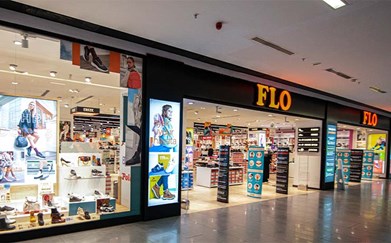
Four Tips for Optimizing Omni-channel Allocation and Replenishment With AI
Consumers and retailers alike know how frustrating stockouts can be. But solving the out-of-stock problem isn’t as simple as carrying more inventory. Retailers run the risk of overstocking, with unsold product taking up valuable space in the store or warehouse and tying up cash flow. Inevitably, they wind up taking steep markdowns to get rid of leftover stock. If items are perishable and nearing their expiration date, they might get thrown out altogether.
That’s why it’s so important for retailers to get the right inventory in the right place, at the right time. Yet with the omni-channel becoming the standard for fulfillment, decisions on allocation and replenishment become far more complicated than just meeting demand at the store level.
A successful strategy today is all about looking at the big omni-channel picture. Retailers not only need to anticipate online and offline sales, but also how, when and where customers will want their orders fulfilled. The goal is to strategically position inventory across the supply chain while satisfying demand from every possible channel. For inventory planning teams, that’s is a massive undertaking.

Need for an Overhaul
Most retailers haven’t adapted their inventory planning processes to keep pace with the omni-channel. They still rely on manual, rule-based systems that leave planning teams constantly playing catch-up with evolving customer demands.
Planners usually start by inputting values — like service levels or weeks of supply — into their allocation or replenishment systems. These targets are based on human judgment, so it’s all a guessing game. The forecast plays a minor role. Most SKUs and store combinations move slowly, so they group stores or items together and let the system run. Then planners watch and wait. They analyze outcomes in retrospect, adjust their parameters, then let things run all over again to try for better outcomes. This approach relies far too much on guesswork and manual intervention to be effective.
Forward-thinking retailers are exploring new strategies and tools to help their planners manage omni-channel complexities with more sophistication. The following are four essential allocation and replenishment tips for maximizing inventory availability, while minimizing costs in the fast-paced omn-ichannel world.
Get granular with AI-powered forecasting. A holistic approach is key when positioning inventory across the omni-channel supply chain. That said, the effort of piecing it together starts with highly granular forecasts employing dynamic models. This is where forecasting tools that use artificial intelligence come into play.
Omni-channel demand is constantly changing, influenced by countless internal and external factors. There are far too many variables and possible combinations of SKU, store location and fulfillment preference for humans to make sense of it all. Here, AI-powered forecasting can generate highly accurate short- and long-term forecasts that account for hundreds of variables, such as market trends, seasonality and special days, promotions and markdowns, competitor prices, weather and individual store characteristics.
AI-generated forecasts can get all the way down to the level of individual SKU, zip code, day and fulfillment preference. These insights lay the groundwork for making optimal inventory allocation and replenishment decisions.

Automate decision making and execution. Having highly accurate, granular forecasts isn’t enough. Retailers need to turn forecasts into decisions, and decisions into actions.
The problem is that inventory planners have so much data to deal with, including changing forecasts, customers, historical sales, returns, assortments, and presentation min/max. And it’s all stored in different forms, across siloed systems. With traditional allocation and replenishment processes, it’s simply impossible for planners to bring all the data together, analyze it, then make decisions with any level of granularity in the same domain—especially when they have to make millions of decisions about thousands of SKUs across hundreds of stores every day.
Retailers can ease the burden on planning teams by letting automation and AI do the heavy lifting. Today’s AI-powered decision platforms easily integrate with a retailer’s enterprise resource planning (ERP) system, warehouse management system (WMS) and other applications. The AI platform brings together and processes massive amounts of data to make granular allocation and replenishment decisions. Then, it puts those decisions into action.
Human planners are then free to focus on higher level strategy, and retailers can take full advantage of their valuable data and forecasts to make the best decisions to drive desired business outcomes.

Shift from satisfying rules to driving profitability. Beyond automating inventory decisions, retailers should focus on optimizing decisions. This starts by moving away from making decisions based on rules and KPIs set by human planners. Instead, retailers should bring all their data and success metrics together to focus on the most important goal: driving profitability. Here, AI makes a major impact.
AI-based allocation can analyze every possible scenario to determine where each piece of inventory will have the highest probability of selling for the highest possible profit. Instead of all the guesswork and waiting, planners can see outcomes in advance. They know exactly how to get the right amount of the right products close to omni-channel customers for higher sell-through and reduced overall fulfillment costs. These AI-generated decisions not only apply to initial allocation, but also to allocation over the course of the entire season, and online fulfillment orders and returns.
When it comes to replenishment, AI systems can determine the ideal time to replenish inventory and the ideal amount to replenish, down to the SKU level. They take multiple factors into account, including product profitability, changing demand patterns and supply chain constraints. This AI-powered approach reduces leftover risks at stores, and early stockout risks at distribution centers.
With AI tools supporting planning teams, retailers can ensure the inventory is always positioned, available and sold in the place where it has the highest profitability.

Don’t go at it alone. While the benefits of AI are already clear, the technology is still relatively new for the retail world. It’s understandable, then, that some retailers are unsure about their ability to implement and manage an AI system. The good news is that they don’t have to do it all alone.
Some retail planning system providers go far beyond technology. First, they do fast implementations with rigorous A/B testing, so retailers will have full confidence in their investment and see tangible value much sooner. After implementation, they serve as a long-term partner. Their experts work continuously to improve system performance and stay ahead in the changing world of omni-channel retail because change is constant in retail.


FLO’s Success Story
An example of AI-powered allocation and replenishment optimization comes from FLO, one of Europe’s largest footwear retailers. The retailer serves millions of customers every day through its network of more than 650 stores and its multi-brand e-commerce channels.
As a leading footwear retail chain, FLO wanted a smarter way to increase profitability and determine the right amount of inventory required in its stores and distribution centers. Plus, in anticipation of omni-channel demand, it needed to fulfill profitably from every possible source by tying together stores, DCs and hub stores with the right amount of inventory at the right time.

FLO implemented an AI-based retail inventory optimization system with advanced allocation and replenishment capabilities. Every day, the system generates forecasts at all levels of granularity, and also predicts how, when and where omni-channel customers want their orders to be fulfilled. The system calculates optimal inventory levels for each item-store-day combination, and FLO uses the automatically generated orders to send the right amount of inventory to its stores.
Thanks to these smart allocations and profit-optimized inventory decisions, FLO has increased availability from 71% to 94%, and reduced lost sales from 15% to 3%, while decreasing inventory overall.
![]()
Retailers in any industry can benefit by upgrading allocation and replenishment from a traditional, judgment-driven process to a smart, profit-driven process. With the right system, strategy and support, retailers will be well-positioned to increase profit margins while delivering superior omni-channel customer experiences.
